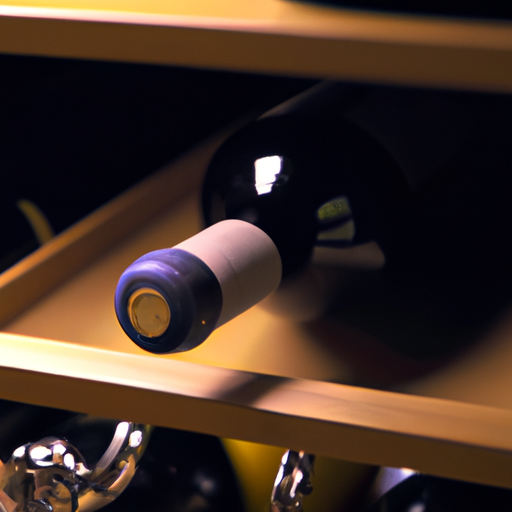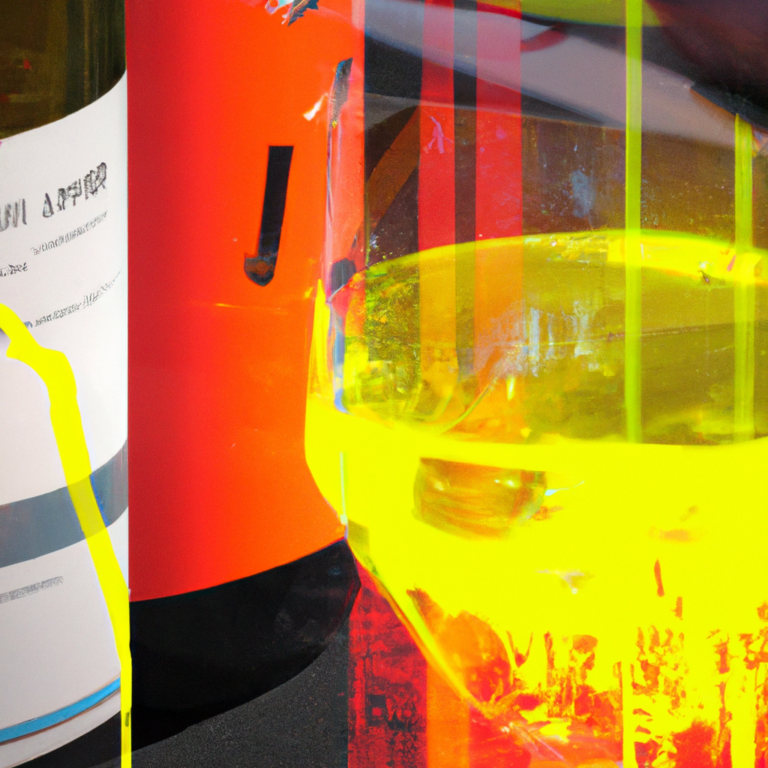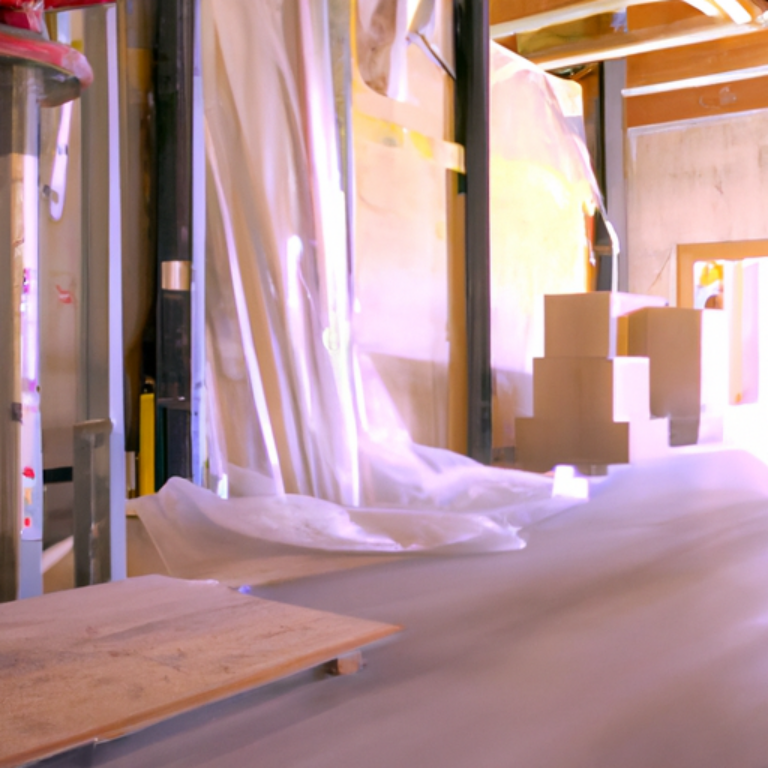Tips for Properly Storing Wine to Preserve its Flawless Flavor
The Importance of Temperature and Humidity Control in Wine Storage
Properly storing wine is essential to preserving its flawless flavor. One of the key factors in wine storage is temperature control. Wine is a delicate beverage that can be easily affected by temperature fluctuations. If the temperature is too high, it can cause the wine to age prematurely and lose its flavor. On the other hand, if the temperature is too low, it can slow down the aging process and prevent the wine from developing its full potential.
Ideally, wine should be stored at a temperature between 45 and 65 degrees Fahrenheit (7 to 18 degrees Celsius). This range allows the wine to age gracefully and maintain its optimal flavor profile. It is important to note that even small temperature variations can have a significant impact on the quality of the wine. Therefore, it is crucial to choose a storage location that can maintain a consistent temperature throughout the year.
In addition to temperature control, humidity is another important factor to consider when storing wine. The ideal humidity level for wine storage is between 50 and 80 percent. This range helps to prevent the corks from drying out and allows the wine to age properly. If the humidity is too low, the corks can shrink, allowing air to enter the bottle and spoil the wine. On the other hand, if the humidity is too high, it can promote the growth of mold and mildew, which can also ruin the wine.
To maintain the proper humidity level, it is recommended to store wine in a cellar or a wine refrigerator. These storage options are designed to provide the ideal conditions for wine aging. They are equipped with temperature and humidity controls that allow you to set and maintain the optimal environment for your wine collection. If you don’t have access to a cellar or a wine refrigerator, you can also use a wine cooler or a wine cabinet, which offer similar benefits.
When storing wine, it is important to avoid sudden temperature changes. Rapid temperature fluctuations can cause the wine to expand and contract, which can lead to leakage and spoilage. Therefore, it is best to choose a storage location that is away from direct sunlight and sources of heat, such as radiators or ovens. It is also advisable to avoid storing wine in the kitchen, as the temperature can fluctuate significantly due to cooking activities.
In conclusion, temperature and humidity control are crucial for properly storing wine and preserving its flawless flavor. Maintaining a consistent temperature between 45 and 65 degrees Fahrenheit (7 to 18 degrees Celsius) and a humidity level between 50 and 80 percent is essential for allowing the wine to age gracefully. Investing in a cellar, wine refrigerator, wine cooler, or wine cabinet can provide the ideal storage conditions for your wine collection. By following these tips, you can ensure that your wine retains its optimal flavor and quality for years to come.
Choosing the Right Wine Storage Containers and Racks

Properly storing wine is essential to preserving its flawless flavor. One of the key factors in ensuring that your wine remains in optimal condition is choosing the right storage containers and racks. The right storage solution will not only protect your wine from external factors that can negatively impact its taste, but it will also allow you to organize your collection efficiently.
When it comes to wine storage containers, there are several options to consider. One popular choice is wooden wine crates. These crates are not only aesthetically pleasing but also provide excellent insulation and protection against temperature fluctuations. Additionally, wooden crates are stackable, making them a space-efficient option for those with limited storage space.
Another option to consider is wine refrigerators or wine coolers. These appliances are specifically designed to maintain the ideal temperature and humidity levels for storing wine. They come in various sizes and can accommodate different bottle capacities, making them suitable for both small and large collections. Wine refrigerators also offer the advantage of being able to control the temperature precisely, ensuring that your wine is always stored at the optimal temperature for aging.
For those who prefer a more traditional approach, wine cellars are an excellent choice. Wine cellars provide a controlled environment that mimics the conditions found in underground caves, where wine has been traditionally stored for centuries. These cellars are typically built with proper insulation, humidity control, and temperature regulation systems to ensure that your wine remains in perfect condition. However, building a wine cellar can be a significant investment, both in terms of time and money.
Once you have chosen the right storage container, it is essential to consider the type of wine racks you will use. Wine racks not only help organize your collection but also allow for proper air circulation around the bottles. This is crucial for preventing mold growth and maintaining consistent temperature and humidity levels.
There are various types of wine racks available, ranging from simple wooden racks to more elaborate metal or acrylic designs. The choice ultimately depends on your personal preference and the size of your collection. Wooden wine racks are a popular choice due to their durability and classic aesthetic. They come in various sizes and configurations, allowing you to customize your storage space according to your needs.
Metal wine racks, on the other hand, offer a more modern and sleek look. They are often modular, allowing you to expand your storage capacity as your collection grows. Metal racks are also known for their sturdiness and ability to withstand heavy loads, making them a suitable choice for those with larger collections.
Acrylic wine racks are a relatively new addition to the market. These racks are transparent, allowing you to showcase your collection while providing excellent protection against UV light. Acrylic racks are lightweight and easy to clean, making them a practical choice for those who value convenience.
In conclusion, choosing the right wine storage containers and racks is crucial for preserving the flawless flavor of your wine. Whether you opt for wooden crates, wine refrigerators, or wine cellars, it is essential to consider factors such as insulation, temperature control, and humidity regulation. Additionally, selecting the appropriate wine rack will help you organize your collection and ensure proper air circulation around the bottles. By investing in the right storage solutions, you can enjoy your wine at its best for years to come.
Proper Techniques for Cellaring and Aging Wine
Proper Techniques for Cellaring and Aging Wine
When it comes to wine, proper storage is essential to preserve its flawless flavor. Whether you are a wine enthusiast or a casual drinker, understanding the techniques for cellaring and aging wine can greatly enhance your enjoyment of this exquisite beverage. In this article, we will explore some tips to help you store your wine correctly and ensure that it ages gracefully.
First and foremost, it is crucial to find the right storage conditions for your wine. The ideal temperature for cellaring wine is between 50 and 59 degrees Fahrenheit (10 to 15 degrees Celsius). Fluctuations in temperature can negatively impact the quality of the wine, so it is important to avoid extreme heat or cold. Additionally, maintaining a consistent temperature is key, as rapid changes can cause the wine to expand and contract, potentially damaging the cork and allowing air to seep into the bottle.
Humidity is another factor to consider when storing wine. The ideal humidity level for cellaring wine is around 70%. This helps to prevent the corks from drying out, which could lead to oxidation and spoilage. If the humidity is too low, the corks may shrink, allowing air to enter the bottle. Conversely, if the humidity is too high, mold and mildew can develop, which can taint the wine. To maintain the proper humidity level, you can use a humidifier or place a bowl of water in the storage area.
Light exposure is another enemy of wine. Ultraviolet (UV) rays can degrade the wine and cause it to develop an unpleasant taste. It is best to store wine in a dark area or use UV-filtering shades or curtains to protect it from direct sunlight. If you have a wine cellar with windows, consider using tinted glass or UV-blocking film to shield the bottles from harmful light.
Proper bottle positioning is also crucial for aging wine. Most wines should be stored horizontally, with the wine in contact with the cork. This helps to keep the cork moist and prevents it from drying out. However, not all wines should be stored this way. Sparkling wines, for example, should be stored upright to maintain their effervescence. It is important to research the specific storage requirements for each type of wine you have in your collection.
In addition to these storage conditions, it is important to handle your wine with care. Avoid shaking or jostling the bottles, as this can disturb the sediment and affect the flavor. When moving wine bottles, always hold them by the base or neck, never by the body, to prevent any unnecessary agitation.
Lastly, keep track of your wine collection and its aging potential. Some wines are meant to be enjoyed young, while others can benefit from years of aging. It is helpful to create a system for organizing your wines, whether it be by region, varietal, or vintage. This will allow you to easily access and enjoy your wines at their optimal age.
In conclusion, proper techniques for cellaring and aging wine are essential to preserve its flawless flavor. By maintaining the right temperature and humidity, protecting the wine from light exposure, storing bottles in the correct position, handling them with care, and keeping track of their aging potential, you can ensure that your wine collection ages gracefully and provides you with many enjoyable moments. Cheers to proper wine storage!







